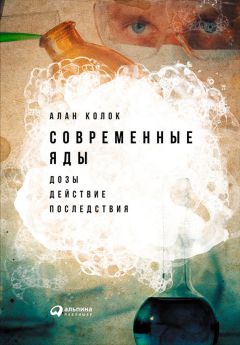Anway, M. D., C. Leathers, and M. K. Skinner. "Endocrine Disruptor Vinclozolin-Induced Epigenetic Transgenerational Adult-Onset Disease." Endocrinology 147 (2006): 5515–23. Epub 2006 Sep 14.
Bannister, A. J., and T. Kouzarides. "Regulation of Chromatin by Histone Modifications." Cell Research 21 (2011): 381–95.
Barker, D. K. P., C. Osmond, P. D. Winter, B. Margetts, and S. J. Simmonds. "Weight in Infancy and Death from Ischaemic Heart Disease." Lancet 334 (9 September 1989): 577–80.
Carey, N. "Beyond DNA: Epigenetics." In The Epigenetic Revolution: How Modern Biology Is Rewriting Our Understanding of Genetics, Disease, and Inheritance. New York: Columbia University Press, 2012. Excerpted in Natural History Online (n.d.). www.naturalhistorymag.com/features/142195/beyond-dna-epigenetics
Esteller, M. "Non-Coding RNAs in Human Disease." Nature Reviews Genetics 12 (2011): 861–74.
Heijmans, B. T., E. W. Tobi, A. D. Stein, H. Putter, G. J. Blauw, E. S. Susser, P. E. Slagboom, and L. H. Lumey. "Persistent Epigenetic Differences Associated with Prenatal Exposure to Famine in Humans." Proceedings of the National Academy of Sciences USA 105 (2008): 17046–9. doi:10.1073 / pnas.0806560105. Epub 2008 Oct 27.
Jirtle, R. L., and M. K. Skinner. "Environmental Epigenomics and Disease Susceptibility." Nature Reviews Genetics 8 (2007): 253–62.
Louis, G. M., M. A. Cooney, and C. M. Peterson. "The Ovarian Dysgenesis Syndrome." Journal of Developmental Origins of Health and Disease 2 (2011): 25–35.
Lumey, L. H., M. B. Terry, L. Delgado-Cruzata, Y. Liao, Q. Wang, E. Susser, I. McKeague, and R. M. Santella. "Adult Global DNA Methylation in Relation to Pre-Natal Nutrition." International Journal of Epidemiology 41 (2012): 116–23. doi:10.1093 / ije / dyr137. Epub 2011 Sep 29.
Martin, G. M. "Epigenetic Drift in Aging Identical Twins." Proceedings of the National Academy of Sciences USA 102 (2005): 10413–14.
Nilsson, E. E., and M. K. Skinner. "Environmentally Induced Epigenetic Transgenerational Inheritance of Disease Susceptibility." Translational Research 165 (2015): 12–17.
Painter, R. C., T. J. Roseboom, and O. P. Bleker. "Prenatal Exposure to the Dutch Famine and Disease in Later Life: An Overview." Reproductive Toxicology 20 (2005): 345–52.
Poulsen, P., M. Esteller, A. Vaag, and M. F. Fraga. "The Epigenetic Basis of Twin Discordance in Age-Related Diseases." Pediatric Research 61 (2007): 38R – 42R.
Prins, G. S. "Estrogen Imprinting: When Your Epigenetic Memories Come Back to Haunt You." Endocrinology 149 (2008): 5919–21.
Reik, W., W. Dean, and J. Walter. "Epigenetic Reprogramming in Mammalian Development." Science 293 (10 August 2001): 1089–92.
Reik, W., and J. Walter. "Genomic Imprinting: Parental Influence on the Genome." Nature Reviews Genetics 2 (2001): 21–32.
Schmidt, C. W. "Uncertain Inheritance Transgenerational Effects of Environmental Exposures." Environmental Health Perspectives 121 (2013): A298 – A303.
Uzumcu, M., A. M. Zama, and E. Oruc. "Epigenetic Mechanisms in the Actions of Endocrine-Disrupting Chemicals: Gonadal Effects and Role in Female Reproduction." Reproduction in Domestic Animals 47 (2012):338–47. doi:10.1111 / j.1439–0531.2012.02096.x.
Xin, F., M. Susiarjo, and M. S. Bartolomei. "Multigenerational and Transgenerational Effects of Endocrine Disrupting Chemicals: A Role for Altered Epigenetic Regulation?" Seminars in Cell Developmental Biology 43 (2015): 66–75. doi:10.1016 / j.semcdb.2015.05.008 [Epub ahead of print].
Zhang, X., and S. M. Ho. "Epigenetics Meets Endocrinology." Journal of Molecular Endocrinology 46 (2011): R11 – R32.
Глава 19. Еще раз о природных ядах
Aquzzi, A., and J. Falsig, eds. «Prion Propagation, Toxicity, and Degradation.» Nature Neuroscience 15 (2012): 936–39.
Espelund, M., and D. Klaveness. "Botulism Outbreaks in Natural Environments – An Update." Frontiers in Microbiology 5 (11 June 2014): 287. doi:10.3389 / fmicb.2014.00287.
Friend, M., and J. C. Franson, eds. "Avian Botulism." Chap. 38 in Field Manual of Wildlife Diseases: General Field Procedures and Diseases of Birds. USGS Technology Report 1999–001. Washington, DC: USGS Biological Resources Division, 1999. http://www.nwhc.usgs.gov/publications/field _manual/field_manual_of_wildlife_diseases.pdf
Saunders, S. E., S. L. Bartelt-Hunt, and J. C. Bartz. "Occurrence, Transmission, and Zoonotic Potential of Chronic Wasting Disease." Emerging Infectious Diseases 18 (2012): 369–76. doi:10.3201 / eid1803.110685.
Saunders, S. E., S. L. Bartelt-Hunt, and J. C. Bartz. "Prions in the Environment: Occurrence, Fate, and Mitigation." Prion 2 (2008): 162–69. Epub 2008 Oct 26.
Saunders, S. E., J. C. Bartz, and S. L. Bartelt-Hunt. "Soil-Mediated Prion Transmission: Is Local Soil-Type a Key Determinant of Prion Disease Incidence?" Chemosphere 87 (2012): 661–67.
Texas Department of Insurance. "Poison Ivy, Oak, and Sumac Factsheet." HS04-064B (3-07). Texas Department of Insurance, Division of Workers' Compensation (TDI / DWC) [n.d.].
Глава 20. Устойчивость к химикатам
Arias, C. A., and B. E. Murray. «Antibiotic-Resistant Bugs in the 21st Century – A Clinical Super-Challenge.» New England Journal of Medicine 360 (2009): 439–43. doi:10.1056 / NEJMp0804651.
Bass, C., and L. M. Field. "Gene Amplification and Insecticide Resistance." Pest Management Science 67 (2011): 886–90.
Bouki, C., D. Venieri, and E. Diamadopoulos. "Detection and Fate of Antibiotic Resistant Bacteria in Wastewater Treatment Plants: A Review." Ecotoxicology and Environmental Safety 91 (2013): 1–9. doi:10.1016 / j.ecoenv.2013.01.016. Epub 2013 Feb 13.
Brown, M. G., and D. L. Balkwill. "Antibiotic Resistance in Bacteria Isolated from the Deep Terrestrial Subsurface." Microbial Ecology 57 (2009): 484–93.
Davies, J., and D. Davies. "Origins and Evolution of Antibiotic Resistance." Microbiology and Molecular Biology Reviews 74 (2010): 417–33. doi:10.1128 / MMBR.00016–10.
Ffrench-Constant, R. H. "The Molecular Genetics of Insecticide Resistance." Genetics 194 (2013): 807–15. doi:10.1534 / genetics.112.141895.
Gonzalez-Rey, M., N. Tapie, K. Le Menach, M. H. Dйvier, H. Budzinski, and M. J. Bebianno. "Occurrence of Pharmaceutical Compounds and Pesticides in Aquatic Systems." Marine Pollution Bulletin 96 (2015): 384–400. doi:10.1016 / j.marpolbul.2015.04.029. Epub 2015 May 18.
Hartley, C. J., R. D. Newcomb, R. J. Russell, C. G. Yong, J. R. Stevens, D. K. Yeates, J. La Salle, and J. G. Oakeshott. "Amplification of DNA from Preserved Specimens Shows Blowflies Were Preadapted for the Rapid Evolution of Insecticide Resistance." Proceedings of the National Academy of Sciences 103 (2006): 8757–62.
Heuer, H., and K. Smalla. "Horizontal Gene Transfer between Bacteria." Environmental Biosafety Research 6 (2007): 3–13. Epub 2007 Oct 26.
Kim, S., and D. S. Aga. "Potential Ecological and Human Health Impacts of Antibiotics and Antibiotic-Resistant Bacteria from Wastewater Treatment Plants." Journal of Toxicology and Environmental Health, Part B Critical Reviews 10 (2007): 559–73.
Levine, D. P. "Vancomycin: A History." Clinical Infectious Diseases 42 (Supplement 1) (2006): S5 – S12. doi:10.1086 / 491709.
Levy, S. B., and B. Marshall. "Antibacterial Resistance Worldwide: Causes, Challenges, and Responses." Nature Medicine 10 (2004): S122–29.
Li, X., M. A. Schuler, and M. R. Berenbaum. "Molecular Mechanisms of Metabolic Resistance to Synthetic and Natural Xenobiotics." Annual Review of Entomology 52 (2007): 231–53. doi:10.1146 / annurev.ento.51.110104.151104.
Martinez, J. L. "Environmental Pollution by Antibiotics and by Antibiotic Resistance Determinants." Environmental Pollution 157 (2009): 2893–902. doi:10.1016 / j.envpol.2009.05.051. Epub 2009 Jun 27.
Mell, J. C., and R. J. Redfield. "Natural Competence and the Evolution of DNA Uptake Specificity." Journal of Bacteriology 196 (2014): 1471–83.
Meyers, J. I., M. Gray, and B. D. Foy. "Mosquitocidal Properties of IgG Targeting the Glutamate-Gated Chloride Channel in Three Mosquito Disease Vectors (Diptera: Culicidae). Journal of Experimental Biology 218 (2015): 1487–95.
Nielsen, K. M., P. J. Johnsen, D. Bensasson, and D. Daffonchio. "Release and Persistence of Extracellular DNA in the Environment." Environmental Biosafety Research 6 (2007): 37–53. Epub 2007 Sep 12.
Olofsson, S. K., P. Geli, D. I. Andersson, and O. Cars. "Pharmacodynamic Model to Describe the Concentration-Dependent Selection of Cefotaxime-Resistant Escherichia coli." Antimicrobial Agents and Chemotherapy 49 (2005): 5081–91.
Palecchi, L., A. Bartolini, F. Paradisi, and G. M. Rosolini. "Antibiotic Resistance in the Absence of Antimicrobial Use: Mechanisms and Implications." Expert Review of Anti-Infective Therapy 6 (2008): 725–32. doi:10.1586 / 14787210.6.5.725.
Palumbi, S. R. "Humans as the World's Greatest Evolutionary Force." Science 293 (2001): 1786–90.
Quinn, R. "Rethinking Antibiotic Research and Development: World War II and the Penicillin Collaborative." American Journal of Public Health 103 (2013): 426–34. doi:10.2105 / AJPH.2012.300693. Epub 2012 Jun 14.
Roberts, J. A., P. Kruger, D. L. Paterson, and J. Lipman. "Antibiotic Resistance – What's Dosing Got to Do with It?" Critical Care Medicine 36 (2008): 2433–40. doi:10.1097 / CCM.0b013e318180fe62.
Sexton, S. E., Z. Lei, and D. Zilberman. "The Economics of Pesticides and Pest Control." International Review of Environmental and Resource Economics 1 (2007): 271–326.
Tilman, D., J. Fargione, B. Wolff, C. D'Antonio, A. Dobson, R. Howarth, D. Schindler, W. H. Schlesinger, D. Simberloff, and D. Swackhamer. "Forecasting Agriculturally Driven Global Environmental Change." Science 292 (2001): 281–84.
Turnidge, J., and D. L. Paterson. "Setting and Revising Antibacterial Susceptibility Breakpoints." Clinical Microbiology Reviews 20 (2007): 391–408.
Verraes, C., S. Van Boxstael, E. Van Meervenne, E. Van Coillie, P. Butaye, B. Catry, M. A. de Schaetzen, et al. "Antimicrobial Resistance in the Food Chain: A Review." International Journal of Environmental Research and Public Health 10 (2013): 2643–69.
World Health Organization. Fact sheet No. 270. "Botulism." WHO Media Centre, August 2013. http://www.who.int/mediacentre/factsheets/fs270/en/ извлечено 4 сентября 2015.
Zhang, Y., C. Zhang, D. B. Parker, D. D. Snow, Z. Zhou, and X. Li. "Occurrence of Antimicrobials and Antimicrobial Resistance Genes in Beef Cattle Storage Ponds and Swine Treatment Lagoons." Science of the Total Environment 463–64 (2013): 631–38. doi:10.1016 / j.scitotenv.2013.06.016. Epub 2013 Jul 7.
Неорганические ионы, например ртути, трудно определить в какую-то из категорий. Ртуть – неорганическое вещество и в ионном виде растворяется в воде, однако может образовывать комплексные соединения с жирорастворимыми органическими веществами. – Прим. авт.
В России известен под названием «Парацетамол». – Прим. ред.
Перевод В. Вересаева
Важность металлов для древних цивилизаций отражена в «Трудах и днях», 800-строчной поэме древнегреческого автора Гесиода, написанной более 2700 лет назад. В этом произведении Гесиод рассказывает о пяти Веках Человека, три из которых были веками чистых металлов (золота, серебра, железа), а четвертый – веком сплава (бронзы). Когда римский поэт Овидий (I в. до н. э. – I в. н. э.) преобразовал концепцию Гесиода и уменьшил число веков с пяти до четырех, век, который он отбросил – Век Героев – был единственным неметаллическим. – Прим. авт.
Работа на вредном производстве (например, сталеплавильном) или дурные привычки (например, курение) могут приводить к абсорбции металлов из атмосферы через вдыхание испарений, но за исключением этих нетипичных путей попадания в организм, для большинства металлов характерен именно водный путь. – Прим. авт.
Для представителей обоих полов на первом месте стоит самоубийство с помощью огнестрельного оружия. Вторым по распространенности среди мужчин является повешение. – Прим. авт.
В России этот лекарственный препарат больше известен под названием «Диазепам» – транквилизатор с успокаивающим действием. – Прим. ред.




